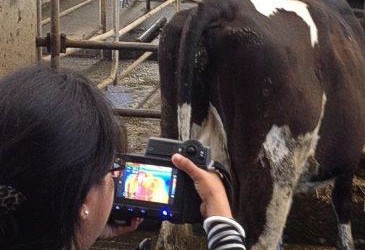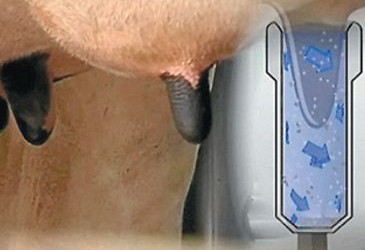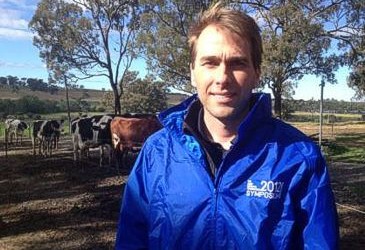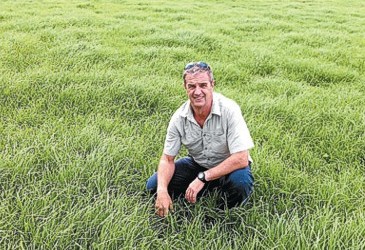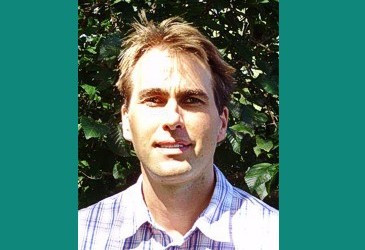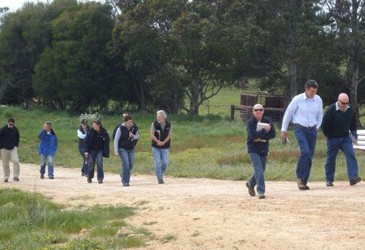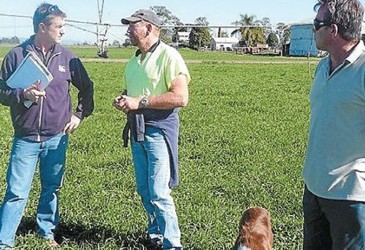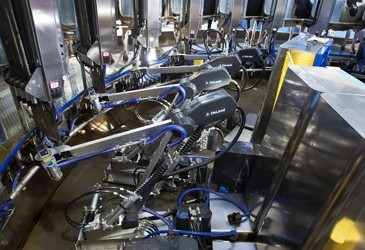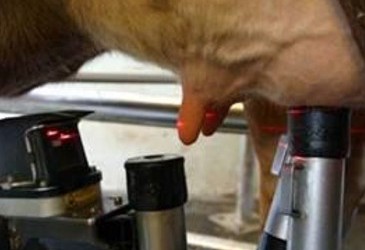Three feeds a day with robotic milking
Research and farmer experience has confirmed that a 3 – way grazing system works better on farms with automatic milking systems (AMS) than the traditional approach of offering cows two fresh pasture breaks a day.
FutureDairy’s robotic prototype completes its journey
FutureDairy has announced that its prototype of the revolutionary robotic rotary will be decommissioned later in the year. Chairman, Shirley Harlock, said the decommissioning was both expected and planned.
More is not always better for Maize
When it comes to irrigation water and nitrogen fertiliser, more is not necessarily better for maize silage. FutureDairy rese arch has shown that although higher levels of water and nitrogen application generally result in higher maize yields, the nutritional value drops because the increase in grain percentage is offset by an increase in fibre content.
Future options for detecting heat in dairy cows
Infrared (IR) cameras could hold the key to improving heat (or oestrus) detection on dairy farms, according to initial results from a FutureDairy pilot trial. FutureDairy project leader, Assoc Prof Kendra Kerrisk, said that although the research was in its early days, the technology was commonly available
Robots for teat preparation
With the robotic rotary now operating at the Dornauf farm in Tasmania, dairyfarmers are starting to ask specific questions about how it works, and whether the optional extras, such as teat preparation robots are a good business proposition.
Technology age reaches dairy pastures
Advances in technology are allowing dairy farmers to use a combination of data from their own farm and climate records to ‘learn’ from seasonal yields. This new learning function will enable farmers to determine the causes of poor pasture performance and to identify ways to improve yields.
Clever design for AMS feedpad
The location of a feedpad in an automatic milking system (AMS) can be a useful tool for encouraging higher levels of intake of supplementary feed, according to recent research conducted by the FutureDairy team. Postgraduate student Tori Scott investigated how the location of supplementary feed affected the time it took cows to move back to the paddock after milking, and the time taken to return for their next milking.
Brave new world of dairy apps
The techno world has reached the dairy industry, with a range of applications that add convenience and power to the business of producing milk, without costing the earth. FutureDairy post-graduate students, Nicolas Lyons and René Kolbach, held the audience at the recent Australian Dairy Conference entranced, with their presentation that gave an insight into some of the ‘apps’ now available to Australian dairy farmers.
Demand driven approach to pasture allocation
A demand-driven approach to pasture allocation has enabled the FutureDairy team to consistently achieve 18-20 tonnes dry matter (DM)/hectare pasture utilisation under full irrigation. This approach involves systematic monitoring of pasture growth and has the potential to achieve higher pasture utilisation than the industry average.
Dr Cameron Clark joins FutureDairy team
The techno world has reached the dairy industry, with a range of applications that add convenience and power to the business of producing milk, without costing the earth. FutureDairy post-graduate students, Nicolas Lyons and René Kolbach, held the audience at the recent Australian Dairy Conference entranced, with their presentation that gave an insight into some of the ‘apps’ now available to Australian dairy farmers.
Dairy advisors train up on robotics
Twelve dairy extension officers across Australia have been involved in a series of training workshops to start gaining the skills they’ll need to work with the local industry as farmers start adopting automatic milking systems (AMS).
Pastures perform well with crops
Dairy pastures grown within a complementary forage system (CFS) can outperform conventional pastures. This is one of the findings from the first year’s results of FutureDairy’s Hunter Valley monitor farms.
FutureDairy presents at ADF
Dairy pastures grown within a complementary forage system (CFS) can outperform conventional pastures. This is one of the findings from the first year’s results of FutureDairy’s Hunter Valley monitor farms.
Nitrogen hot spots
Trials conducted by the FutureDairy team at Camden, NSW monitored nutrient movement around the dairy farm, revealing ‘hot spots’ of nitrogen surplus within the system – in specific locations and during certain times of the season.
FutureDairy nitrogen results
FutureDairy ’s research has found that a complementary forage system (CFS) achieved the most efficient use of nitrogen at the ‘whole farm level,’ compared with other dairying systems used around the world. A CFS involves allocating a portion of the farm to intensive forage production to increase productivity from home – grown feed.
Robotic rotary revolutionises dairy farming
Dairy farmers get to sleep in.
This week heralds a new era in dairy farming with the revelation of the robotic rotary, a world first, developed by DeLaval in collaboration with Australia’s FutureDairy project. Designed for Australian grazing herds with more than 300 cows, the robotic rotary automates most milking tasks, enabling the job to be performed as a background activity, without the presence of a human operator.
Crops to alter milk composition
FutureDairy researchers have discovered that cows can be trained to respond to sound, opening up
possibilities for teaching cows to come to the dairy in response to a particular call.
Less is best when it comes to brassica
Dairyfarmers sowing brassica – or forage rape – can save on seed costs this season, with FutureDairy’s latest research showing that a lower sowing rate results in a crop density that cows prefer to graze, with similar drymatter yield and feed quality to crops sown at higher seeding rates.
Growing a healthy dairy business and lifestyle
Victor and Denise Rodwell are living proof that it is possible to expand a dairy business and end up with a better lifestyle.Over the past six years, their herd has grown from 490 cows to 820. It’s a stark contrast to the 45‐cow operation Victor joined in 1985.
New insights into masititis risks
FutureDairy research has revealed new insights into risks for clinical mastitis in dairy cows, and particularly those milked in a robotic or automatic milking system (AMS).



